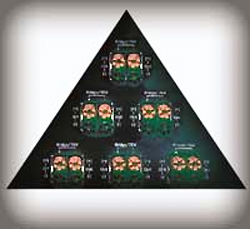
IT ADDS UP
Cost savings is another advantage. Multichannel amps cost less to build.
Not only is there less metal per channel and no power transformer when using switching supplies, but fewer components, such as power cords, switches, fuse holders, circuit breakers, etc., adds up and the savings is passed on to the buyer.
Further cost savings can result from less rack space used, thus less racks needed, and for mobile use, less truck space occupied, faster load-ins, load-outs, etc.
The main disadvantages of these newer multichannel amps are a lack of power-supply redundancy and new-technology reliability. With most multichannel models, there’s only one power supply for all the channels, so you can have up to 8 channels on one supply, as compared to the traditional two channels per supply.
Amp-channel failure usually results in the power supply being turned off for all channels, although some models avoid that problem using intelligent circuitry or simply employ multiple power supplies.
However, before assuming that one power supply is a disadvantage, consider the application. For studio or home theater applications, it’s generally not all that critical. For live uses like stage monitoring, it can be quite the opposite. Your application will be the deciding factor here.
How reliable is this new technology? If you ask the manufacturers, it’s rock solid. If you ask the “bleeding” users on the cutting edge that have experienced problems, you’ll get a different answer.
The bottom line, as with all new technology, is that commensurate reliability will come with the passage of time. There was a day when those new-fangled transistor-based amplifiers would blow up if you looked at ‘em sideways, and only tube models were dependable.
The best hedge is to ask around and find out which brands have got the reliability angle figured out.
